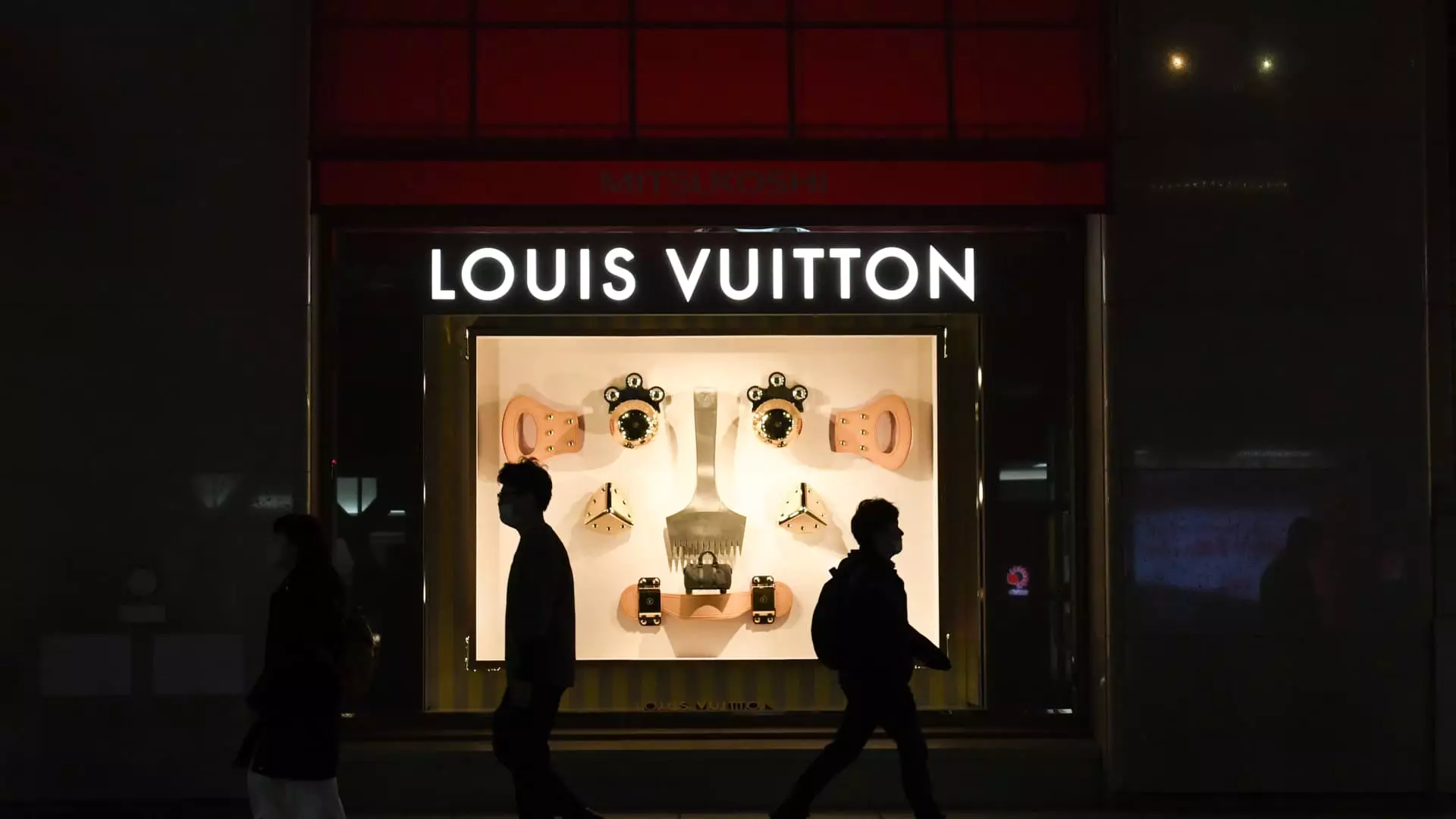On a rather tumultuous Tuesday morning, shares of LVMH experienced a steep decline, plunging as much as 8%, causing a seismic shift in the luxury industry landscape. In a surprising twist, the company momentarily lost its crown as the world’s largest luxury firm to its competitive rival, Hermès. This shocking turn of events stemmed from an unprecedented 3% year-on-year drop in first-quarter sales—an outcome that no analyst had anticipated. This downfall not only marred LVMH’s reputation but also sent ripples throughout the luxury sector, leading to simultaneous declines in other luxury brands like Kering and Burberry. Amidst overall market gains, it became glaringly evident that LVMH’s woes were a microcosm of broader industry challenges.
The Price of Prestige
LVMH’s flagship products—including their exquisite wines, spirits, and fashion items—are not simply commodities; they embody a lifestyle of prestige that wealthy consumers aspire to attain. Nevertheless, the company reported a catastrophic 9% drop in wine and spirits sales, attributing the slump to weakened demand in major markets like the U.S. and China. Cognac, once a symbol of refinement and indulgence, has found itself entangled in geopolitical tensions—leading many to speculate if the luxury market can remain insulated from such global disturbances. The fashion and leather goods division, responsible for a staggering 78% of LVMH’s profit, suffered a 5% decline, sending shockwaves through investor sentiments.
Pandora’s Box: The Geopolitical Landscape
The luxury sector has historically thrived on the premise of exclusivity and opulence, yet external factors are beginning to rear their ugly heads. Political uncertainty, particularly surrounding U.S. trade policies, has shaken this once-stable domain. Investors are left wondering whether LVMH’s sales troubles will reset the industry’s growth trajectory. Analysts from Citi echoed these concerns, highlighting the overwhelming pressures stemming from a turbulent economic environment characterized by elevated global uncertainty—where even the most esteemed luxury brands cannot expect smooth sailing.
Illuminating the Future: A Bleak Outlook?
Amid these disheartening figures, LVMH’s Chief Financial Officer, Cécile Cabanis, remained resilient, suggesting that the group hadn’t observed a significant alteration in its long-term growth trajectory. However, the language she employed—such as “aspirational clientele” being more susceptible to economic fluctuations—reveals an uncomfortable truth: even luxury brands are not impervious to a faltering economy. If these “wealthy consumers” begin to temper their spending due to uncertainties, it threatens to unveil deeper weaknesses within the luxury market.
Indeed, the anticipated levelling off in consumer spending could have far-reaching repercussions. The high-end market’s reliance on elite clientele could rapidly devolve into a precarious position where those who once drove luxury purchases pull back.
Inflation and Price Adjustments: A Double-Edged Sword
The condition of the luxury industry is further complicated by escalating inflation and currency fluctuations. Cabanis hinted at a strategy of repricing goods to counterbalance these forces—but this poses its own dilemma. Raising prices may alienate a segment of their devoted clientele, eroding brand loyalty in a time when stability is increasingly critical. While luxury brands often possess the leeway to pass costs onto affluent consumers, the question remains: how long can this continue before it backfires?
Additionally, the actual impact of tariffs—an issue of pressing concern for luxury firms—looms on the horizon like a thundercloud. Analysts have warned about the potential economic downturn prompted by tariff-induced disruptions, particularly affecting U.S. and Chinese markets. Wariness is warranted, as it could delay any recovery after a period already marked by prolonged weakness.
Luxury in Limbo: Future Fortunes at Stake
What this current predicament illustrates is that the luxury sector is teetering on a precipice. Faced with declining revenues and external pressures, brands like LVMH must navigate an intricate web of geopolitical uncertainties and evolving consumer behaviors. How this pivotal moment will reshape the luxury narrative is anyone’s guess. The vulnerability of an otherwise illustrious empire sends a resounding message: no industry, regardless of how affluent or elite, is immune to the tempestuous waves of broader economic challenges. As the luxury market faces an uncertain future, observers can only watch and wait—pondering the potential ramifications of this volatile landscape.

